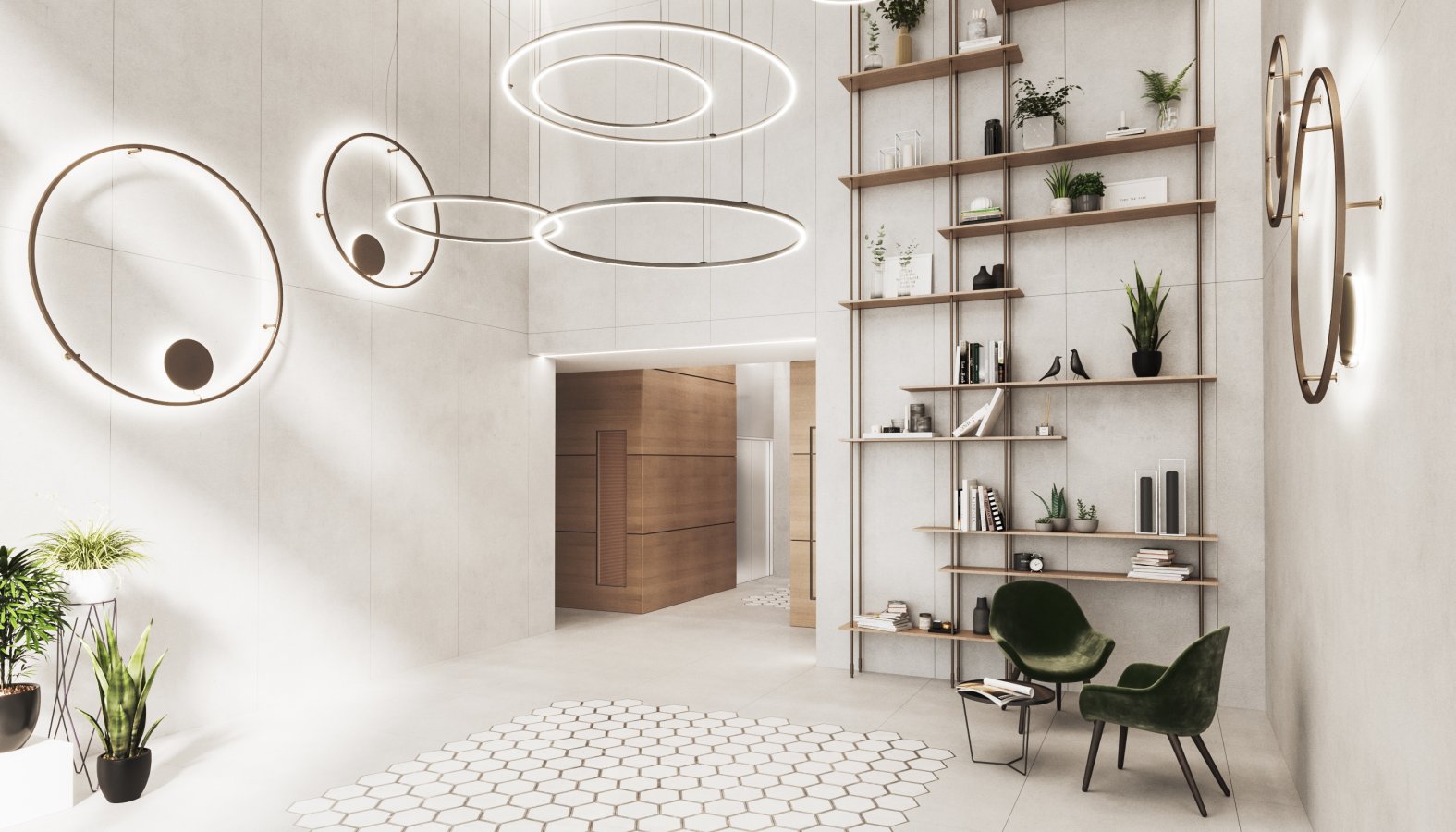Being familiar with the principles of lighting engineering is vital to study and design the correct illumination for indoor and outdoor spaces, using both natural and artificial light.

In order to get a better comprehension of lighting engineering, it is important to know how light parameters are defined and measured, in relation to the visual perception of the human eye. The photometric dimensions of light are:
- Luminous flux
- Luminosity
- Illumination
- Light intensity
- Luminance
The most important parameter in lighting engineering is luminance, due to the fact that it is closely related to the different surfaces and to the human perception. To perform a lighting engineering study, it is necessary to know also the features of each lighting source, natural and artificial.
Natural light has a variation in intensity and color, according to the specific moment of the day, the atmospheric conditions and the seasons; on the other hand, artificial light sources can be defined in terms of light quality and quantity, regardless if the light is coming from incandescence bulbs, LEDs or different sources.
Lately, lighting engineering has become very relevant also in architectural design, ensuring an even more important role to the definition of the most appropriate illumination.
In fact, it is widely known that, for whatever space, indoor or outdoor, residential, commercial, healthcare, light is considered more and more a fundamental aspect for the success of a construction and decoration project. Performing a lighting engineering calculation is therefore very important and here are a few guidelines on how to proceed.
How to make a good lighting calculation
In order to achieve a good lighting engineering project, it is fundamental to complete a basic calculation. First of all, we need to know in details the environment: materials and colors of furniture, floors, wall and ceiling, combined with the kind of lighting which is present in the room.
An attempt to manually complete this task involves risk of not being precise enough, for this reason some specific software packages has been developed to allow an accurate study of the light behavior using virtual reality simulations.
Generally speaking, in a lighting engineering project it is necessary to simulate the illumination output and consequently the quantity and power of the lighting sources to be installed, taking also into account the applicable regulations. The final goal is obviously to ensure well-lit and enjoyable spaces.
Additionally, the amount of light and the number of sources which is needed to ensure a uniform illumination is also used to determine the power requirements for a project.
Types of lighting and how to position lighting sources
In the design phase, it is important to define the positioning of the lighting sources which will allow to achieve a satisfactory illumination and an aesthetically pleasing result. Depending on the disposition of furniture, tables, windows and doors, we will decide which areas require a stronger illumination.
Another key factor to consider is the chromatic rendering of light. In order to evaluate the tonality, we need to consider the color temperatures of a light source: low temperatures correspond to a warm light and high temperatures to a cold light.
There is a broad range of application from which to choose: pendant lights, wall sconces, spotlights, designer floor lamps, table lamps and much more. Lamps can be different for their design, shape, material, finishing; even their plays a role in the final choice, as it has to match the surrounding space.
For example, white lamps represent the perfect option to infuse elegance and order, plus they can easily fit in every design project. The ample availability of models and materials combinations allows the creation of truly extraordinary effects, defining the desired atmosphere for our spaces.
A very original white lamp is Bell, wrapped in fabric and with a bell-shaped form, available as pendant, wall or ceiling mount of different sizes.
Even black lamps are particularly elegant, especially if our goal to design a fascinating and evocative atmosphere, even in very different setups. Matching black lamps with any other color will create a powerful combination, recommended for minimal furniture, industrial style, for who is interested in novelties and the latest trends.
An iconic and evocative pendant is Jewel, defined by the double-crossed arch which wraps an aluminum conical shape containing a dimmable LED source.
Colorful lamps, instead, are recommended to provide a lively touch to spaces, creating strong contrasts with great visual impact.
Axolight has a broad offering of products which can be even combined to design a superior lighting project, ensuring the maximum visual comfort with unrivaled aesthetics.
